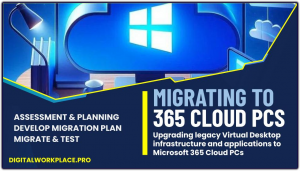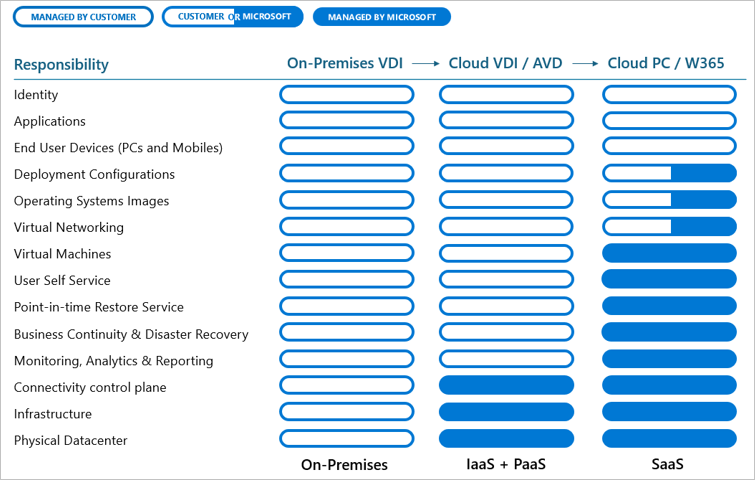Comparing Azure Virtual Desktop and 365 Cloud PCs for Your End User Computing infrastructure
Virtual desktops provide the core building block for a more agile enterprise organization, and Microsoft offers two distinct options.
 When it comes to cloud-based solutions for virtual desktop infrastructure, two popular options are Azure Virtual Desktop and Microsoft 365 Cloud PC.
When it comes to cloud-based solutions for virtual desktop infrastructure, two popular options are Azure Virtual Desktop and Microsoft 365 Cloud PC.
While both offer remote desktop capabilities, there are key differences between the two services that businesses need to consider before making a choice.
Empowering Remote Workers
The Future of Work is characterized by remote and flexible work arrangements, digital transformation, and the integration of emerging technologies. End User Computing enables organizations to seamlessly transition to this new work paradigm by providing the necessary tools and infrastructure to support remote work, collaboration, and innovation.
Virtual desktops provide the core building block for a more agile enterprise organization. VDI divorces the desktop from local hardware, so users can access their apps from anywhere via any device. It enables businesses to create and manage their own desktop images, so the business can create desktops with application sets tailored for certain user types, such as finance and HR, ideal for scenarios such as call centres where hundreds of staff all work with exactly the same application set.
Enterprise organizations like Crocs and ING Bank have migrated to Microsoft 365 for their global collaboration platforms, which gives workers access to a full, personalized Windows experience from a Cloud PC on any device. Windows 365 Cloud PCs are simple to manage, use technology that employees and contractors are already familiar with, and provide scalability and global availability.
ING can easily manage Cloud PCs with its existing IT team and reduce costs by eliminating 1,200 on-premise servers, helping to facilitate their pathway to net zero carbon emissions and providing the bank with a model for a worldwide, cloud-powered future.
AVD vs Cloud PC
While both Azure Virtual Desktop and Microsoft 365 Cloud PC offer virtual desktop solutions, the choice between the two depends on factors such as customization needs, management preferences, integration requirements, scalability, and budget considerations.
Azure Virtual Desktop is ideal for organizations seeking a highly customizable and scalable virtual desktop infrastructure with advanced management capabilities. On the other hand, Microsoft 365 Cloud PC is a convenient and cost-effective solution for businesses looking for a fully managed virtual desktop service integrated with Microsoft 365 applications.
Christiaan Brinkhoff provides an excellent comparison guide this TechCommunity article, notably setting the context by describing each within the overall evolution of VDI models:

and also in terms of the customer / supplier responsibilities by service models:

This guide helps organizations weigh up which factors are more important to them between the two products:
Azure Virtual Desktop is a comprehensive desktop and app virtualization service hosted on Microsoft Azure cloud infrastructure. It allows for more customization options, enabling organizations to tailor the virtual desktop environment to meet specific requirements.
Microsoft 365 Cloud PC is a subscription-based service that offers virtual desktop capabilities through Microsoft’s cloud infrastructure. It is tightly integrated with Microsoft 365 applications and services, providing a seamless user experience for productivity and collaboration, and offers a fully managed virtual desktop solution, reducing the need for extensive IT expertise to set up and maintain the environment.
With a predictable monthly subscription fee, Microsoft 365 Cloud PC provides cost-effective virtual desktop solutions for businesses looking to streamline their IT expenses.
Conclusion
Ultimately, the decision between Azure Virtual Desktop and Microsoft 365 Cloud PC should be based on your organization’s specific requirements, budget constraints, and long-term IT strategy. Evaluating the features and benefits of each service will help you make an informed choice that aligns with your business objectives.



